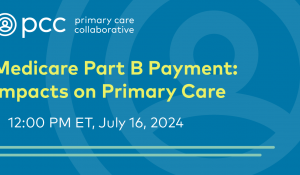Parents Available to Help (PATH)/ Family Voices of Connecticut's peer support program helps empowers families to advocate for the best care for their children and reaffirm their value as parents and caregiviers. Learn more about their impactful work in the attached Parent to Parent story.
Health Literacy
The Centers for Medicare & Medicaid Services (CMS) identified six key focus areas to measure effective patient and family engagement in clinical practice. The intent of this metric is to ensure that practices are addressing health literacy issues, and have system in place for surveying patients to assess health literacy (e.g., CAHPS Health Literacy Item Set, etc.)
Related Resources
November 2019
November 2019
Family Voices of Tennessee, a program of the Tennessee Disability Coalition, provides emotional and educational support to the families of these children. To reach these families on what can be a lifelong, complex healthcare journey with their child, Family Voices of Tennessee has created a unique...
November 2019
The Yakima County Parent to Parent program offers emotional support and information to families raising children with special health or developmental needs. In addition to parent support, the program offers sibling support, recreation and social opportunities, a newsletter, and disability...
October 2016
The Patient Preferences Passport is a user-friendly tool patients can use to take ownership of their care. Additionally, the guide outlines how to effectively implement the tool in practice settings.
Planetree
October 2019
The National Resource Center for Patient/Family-Centered Medical Home Is a national technical assistance center focused strengthening the system of services for children and youth with special health care needs and their families by enhancing the patient/family-centered medical home.
American Academy of Pediatrics
October 2015
This comprehensive document contains programs, practices and research to support the integration of patient and family engagement, and specific strategies for Patient and Family Advisory Councils.
National Academy of Medicine Patient & Family Council Leadership Network
October 2015
This easy to use, interactive PDF contains a vision for patient and family engagement in health care, a set of 8 change strategies, tactics and milestones and simple actions to take today.
American Institute for Research, Gordon and Betty Moore Foundation
October 2017
Tool for patients to effectively record discussions, decisions made and follow up items from an appointment.
AHRQ
October 2019
Brochures and posters about Ask Me 3® -- an educational program that encourages patients and families to ask three specific questions of their providers to better understand their health conditions and what they need to do to stay healthy.
Institute for Healthcare Improvement
October 2017
The Be Prepared To Be Engaged toolkit will help patients and their families prepare for and become more fully engaged in their medical appointments—to be ready for the appointment, to speak up, to ask questions, to take notes. Tools are also available for clinicians and practice staff to...
AHRQ
October 2018
This guide outlines how practices can involve patient and family advisors in the Choosing Wisely implementation, which helps patients ask questions and make informed decisions.
Choosing Wisely, IPFCC, PCPCC
October 2014
This four minute video provides a overview of the Patient-Centered Medical Home, and how it can improve our healthcare system for both patients and providers.
Emmi
October 2019
These downloadable resources can be used by clinicians to educate patients about Choosing Wisely, which helps patients ask questions and make informed decisions. Several of these items can be placed in waiting or exam rooms or given to patients as handouts.
Choosing Wisely, ABIM Foundation
October 2019
This website includes over 100 health literary assessment tools. Numerous search filters are available, including specific context/disorder.
University of Boston, U.S. National Library of Medicine, CommunicateHealth, Inc.
October 2019
The go-to resource for latest updates and background information on the Quality Payment Program (QPP) from the Centers for Medicare and Medicaid Services (CMS).
CMS
September 2019
Patient portals are becoming more prevalent, as healthcare providers, payers, and patients become more comfortable with their use. A 2017 survey found that 82% of patients reported having logged into their provider’s patient portal at least once – a drastic change from a similar 2013...
Patient Portals: How can they impact primary care?
October 2018
This peer-reviewed report on health care transition for pediatric to adult health care includes a process for transition preparation, planning, tracking, and follow-through and is based on more than two decades of evidence-based research. A special focus is placed on young adults with special...
American Academy of Pediatrics
April 2018
This document outlines how patient and family engagement activities can improve health outcomes and achieve TCPI program-specific metrics, which align with quality payment program standards. Links to additional resources for a deeper dive are also provided.
Northern New England Practice Transformation Network
April 2018
This document outlines how the Choosing Wisely program can help practices achieve TCPI program aims, which align with the Quality Payment Program.
Maine Quality Counts, PCPCC
April 2018
This comprehensive guide provides primary care practices with four strategies that they can adopt to improve patient safety and engagement.
AHRQ
Pages
Secondary menu
Copyright © 2024 Primary Care Collaborative









